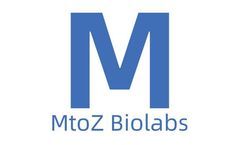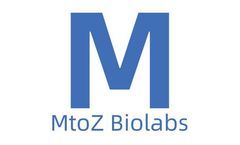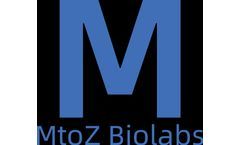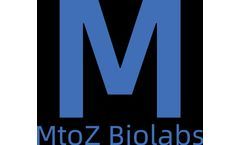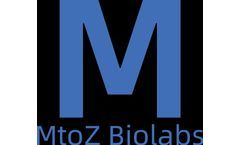Refine by
Gene Expression Articles & Analysis: Older
189 articles found
The process involves printing small spots of biological samples, which are then used for various types of assays, including gene expression profiling, protein interaction studies, and glycan analysis. ...
This requires a comprehensive analysis of gene expression and the regulatory mechanisms at play during infection. ...
Detection of miRNA Target Genes: The primary application of degradome sequencing is to detect which genes are cleaved by specific miRNAs. ...
MicroRNAs (miRNAs) are small, non-coding RNA molecules that play a crucial role in the regulation of gene expression. Their ability to modulate various biological processes makes them significant players in the field of molecular biology and medicine. ...
This technology has revolutionized various fields, including drug discovery, gene expression studies, and cellular signaling research. The Basics of Reporter Genes At the core of reporter stable cell lines is the concept of reporter genes. ...
The cells are characterized by their cobblestone morphology, typical of epithelial cells, and demonstrate a high degree of adherent properties. They also express various integrins and adhesion molecules, which are crucial for cell-cell and cell-matrix interactions within the corneal environment. ...
These tools, with their capacity for targeted genome editing, serve as invaluable conduits for generating customized zebrafish models that elucidate complex gene functions and interactions. CRISPR/Cas9 in particular, stands as a groundbreaking technique in this arena. ...
Quantitative Real-Time Polymerase Chain Reaction (qPCR)By measuring the mRNA level of the collagen gene, the expression level of collagen can be indirectly inferred. It requires specific primers and probes, and suitable internal reference genes for standardization.Imaging Methods1. ...
One of the main challenges in gene delivery is ensuring that the introduced gene is expressed in the right cells. Researchers are constantly working to meliorate gene delivery methods to insure that the fitted gene reaches, and is expressed in the target cells. In addition to treating various ...
Here are some specific examples to illustrate the selection of the number of parallel samples in different situations.Basic Biological ResearchIn basic epigenomics research, such as studying how the methylation status of a gene affects gene expression, at least three parallel samples are usually needed. ...
Acetylation is a common post-translational modification of proteins, typically occurring on lysine residues of proteins, and plays a crucial role in regulating protein function, cell signaling, gene expression, and disease onset. For instance, the acetylation state of histones directly influences chromatin structure and the regulation of gene ...
TR is linked to cell phenotype and is influenced by the UTR region, miRNA, and other factors. The study of gene TR changes in different samples is important for understanding the molecular mechanism of ncRNAs. ...
It was shown that in vitro 3D cultures recapture physiological cell-cell and cell-environment interactions (i.e., cellular morphology, cell differentiation, proliferation and gene expressions) with a greater relevant to animal and human studies, thus effectively facilitating the research progresses. 3D co-culture cell models now serve as important tools for ...
The Epigenetic Approach utilized by Creative Bioarray involves the manipulation of gene expression without altering the underlying DNA sequence. By modulating the epigenetic marks on the genome, such as DNA methylation and histone modifications, the cells are induced to overcome senescence and achieve immortality. ...
Single-cell sequencing is a technique that allows the sequencing of gene expression in individual cells. By sequencing individual cells, researchers can obtain more accurate information about the state of the cells, thereby better understanding the heterogeneity between different cells. ...
Ribonucleases (RNases) represent a critical class of enzymes with a principal role in the degradation of RNA, crucial for maintaining cellular homeostasis and regulating gene expression. By cleaving RNA molecules, RNases are integral to numerous biological processes, ranging from RNA maturation to the innate immune response against RNA viruses. ...
Single-Cell RNA Sequencing (scRNA-seq): This powerful technology enables the examination of gene expression at the single-cell level. In brain tumors, scRNA-seq can reveal the diversity of cell types within a tumor, identifying which cells contribute to malignancy and which may respond to specific treatments. ...
What is Gene Knockout Technology?Gene knockout (Gene Knockout) is a molecular biology technique that allows researchers to block or shut off the function of a specific gene to study its role and importance. This technique is achieved by introducing mutations into the gene, making it impossible for the ...
Type III collagen is particularly common in newly formed connective tissues and rapidly growing tissues, such as during the wound healing process.The production of recombinant Type III collagen is accomplished by inserting the gene encoding Type III collagen into the DNA of an appropriate host cell, such as bacteria, yeast, insect cells, or mammalian cells. ...
For example, the activity of UDP-glucose pyrophosphorylase can be modulated by the binding of allosteric effectors, which can either activate or inhibit the enzyme depending on the needs of the cell. Additionally, the expression of genes encoding sugar nucleotide-metabolizing enzymes can be regulated in response to changes in the cellular environment or ...





